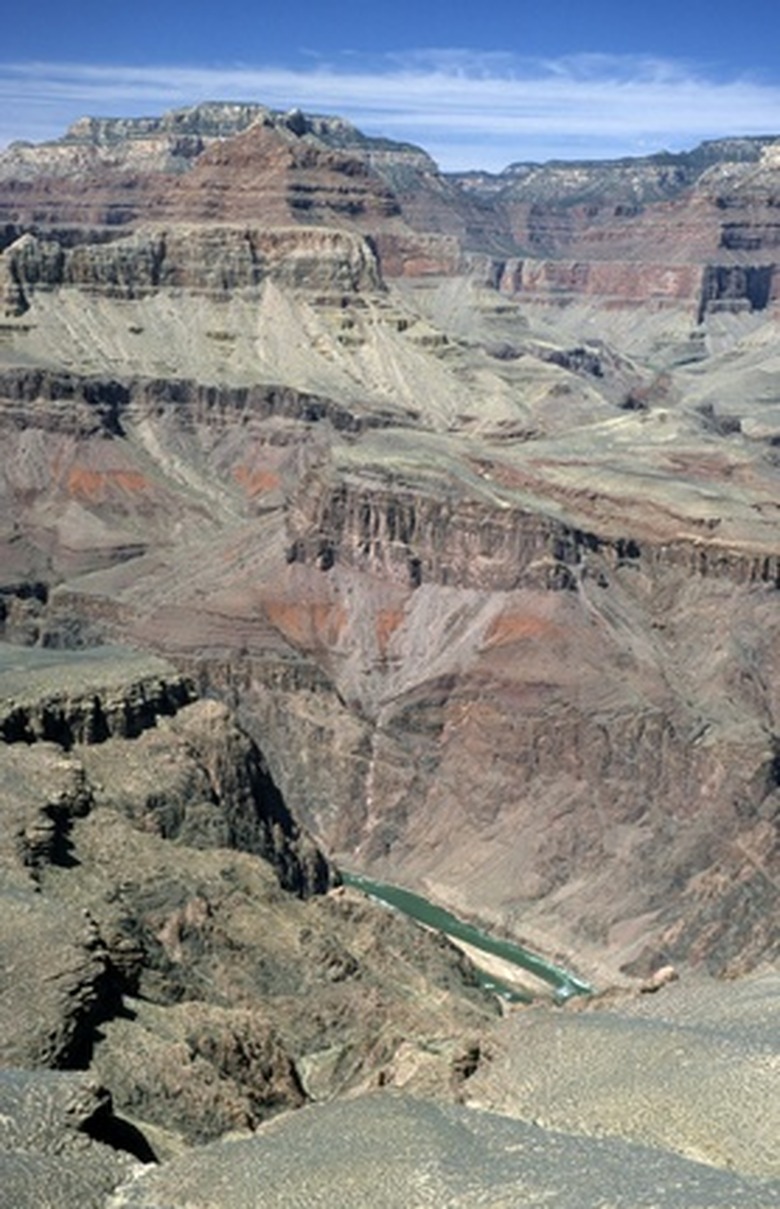A gorge is a deep channel formed by a river that has eroded the earth’s crust over millions of years. Some gorges are so large they are visible from space. One of the most famous is the Grand Canyon.
Characteristics
Gorges have steep banks where the river has cut through the earth. The Grand Canyon, which was formed by the Colorado River, reaches 6,000 feet deep — more than a mile — and is 277 miles long and 15 miles at its widest point. Some gorges are dry and the rivers that once carved them long gone.
Famous Gorges
Gorges are found all over the world. The largest American gorges include the Grand Canyon, Gorges of Finger Lakes, Columbia River Gorge, New River Gorge and Canyon Lake Gorge. China’s gorges include the Yangzi River’s Three Gorges, Yarlung Zangbo Grand Canyon and Kali Gandaki Gorge. The Victoria Falls Gorge and Olduvai Gorge are located in Africa; the Gorge du Verdun is in Europe.
Benefits
The tremendous power that produced the gorges is now harnessed on many of the rivers by hydroelectric dams to produce electricity. The rivers and gorges also offer whitewater rafting, hiking, wind sailing and other recreational opportunities.

